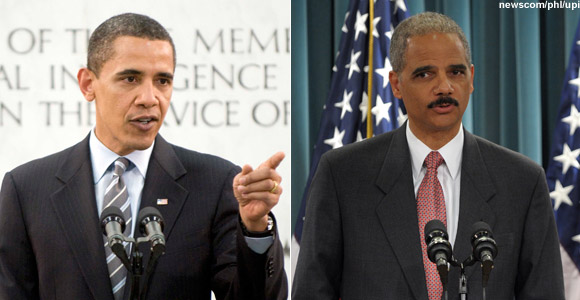President Barack Obama last week told a radio audience that he’s made sure the Justice Department is reviewing restrictive voting laws passed across the country. But as a practical matter, DOJ’s reach is limited.
Sure, federal officials with DOJ’s Civil Rights Division are reviewing voter ID laws passed in South Carolina and Texas because both states have a history of discrimination and are covered by Section 5 of the Voting Rights Act. DOJ told South Carolina in August that they need more info before making a decision and in September told Texas they have more questions.
But for all the other states that passed voter ID laws that aren’t subject to Section 5 of the Voting Rights Act, federal intervention is a long shot. The only other option for opposing a voter ID law is an argument under Section 2 of the VRA, where the burden of proof is pretty high.
“In order to bring a Section 2 case, you’d have to as a practical matter show two things. One, that there’s a significant racial disparity and two, that the burden of getting an ID is significant enough for us to care about,” Samuel Bagenstos, who was until recently the number two official in the Civil Rights Division, told TPM.
The Supreme Court’s decision in the Indiana voter ID case also suggests the court would be skeptical of a Section 2 case. And regardless of how the courts would find, any Section 2 case would almost certainly have to wait until after the 2012 election, since the evidence that the laws were discriminatory “can only be gathered during an election that takes place when the law is enacted,” Bagenstos said.
Nevertheless, Assistant Attorney General Thomas Perez, who heads the Civil Rights Division, has told both the House and the Senate that DOJ is reviewing the state laws under both Section 5 and Section 2. Both clips are embedded below.






